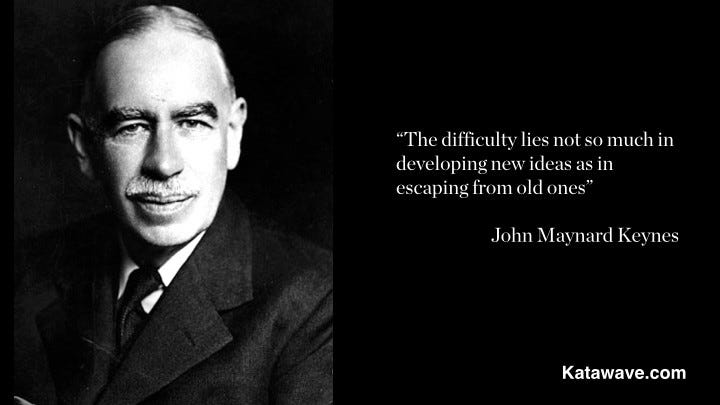
Before Smartphones, most of us were unaware of operating systems (OS). It wasn’t until everyone had a mobile computer (which happens to be a phone) that updating an OS became commonplace.
iOS updates, in particular, are made very user-friendly, as we have come to expect from Apple.
Operating systems help us communicate with the computer. The computer speaks in 1’s and 0’s while us humans speak our various languages. The OS manages the computers memory, processes and all of its software and hardware. The OS schedules tasks and resources for the efficient use of the system and resources. Application programs (apps) usually require an operating system to function.
Business Operating Systems
Hold the thought of a computer OS and now think of any business.
Let us use the phrase Business Operating System (BOS), which refers to the collection of business processes used in any company. Beyond a computer OS, let the BOS definition include structure, principles, and practices which drive any organisation.
Like a computer OS does with 1’s and 0’s, businesses have a common way that people communicate with each other within that business.
Like the computer OS, businesses schedule tasks and resources (people) based on the priorities of the business. It is the OS that decides what is the priority and can freeze or deny tasks that are seen as distractions (like the future of the company, but more on that later).
Businesses may have application programmes (apps) that run under the OS. For clarity sake apps can be business units, divisions (or silos). These apps can have their own look, feel, culture and goals, but ultimately they are controlled by the overall business OS.
There are myriad reasons for this. There is more competition than ever before, there are higher expectations than ever before and there is less consumer tolerance for marketing (good or bad) than ever before.
Just because a business is making money on a product today does not mean that product will remain relevant in the near term, let alone the far term.
So many industries are faced with this reality. How do we maintain profits in the near term, while investing in the future? Can we afford to take our eyes off the prize?
This is where leaders need to manage 4 (or more) operating systems for a business to thrive.
The Latest OS (Latest Update)
Think of the latest phone OS update as your existing business OS as it is today. This is working in the business rather than on the business.
The present pays the bills and most people in the business are measured and rewarded on metrics for today’s business.
You may get some very near term beta projects (in computing beta refers to release or preview versions), but they are often looking for a very near term return on investment. It is rare that you will find leaders investing beyond beta projects.
Near Term Innovation (The Beta Release of an OS)
Near Term Innovation involves going beyond beta testing.
This involves select groups of early adopters within a company, who collaborate to innovate. This group may meet on a regular basis and encourage collaboration by working on new cross-divisional applications.
This group usually involves people who go beyond their daily role and have a genuine interest and drive to make their company a better place. These people are the ones with great attitudes. These people are what I call positive vampires. As a leader you want this group to positively infect the rest of the company.
For this new application to survive, the business operation system (BOS) must facilitate their success. They should be set aside a budget. They should be allowed to “fail (learn) and fail (learn) quickly”. They should be allowed to rapidly prototype. They should be allowed to create experimental products or services without the need of a business plan or short term return on investment.
Parameters
This latest OS team simply need to be given parameters by the overall BOS.
In turn, this highlights the need for a company-wide North Star.
Once this beta team works to the North Star, they should be allowed to build the future as part of their jobs today. They should not have to do this as a post-work passion project.
The overall BOS (Leadership) needs to get out of their way and pave their way. A change team like this is going to run into many blockers.
The blockers will be those colleagues who refuse to upgrade to the latest iOS. It will be those who will not even experiment with a beta version, in the world of operating system updates, these people are known as laggards.
Laggards
Before we look at the future iOS, it is important to recognise the past OS.
14% of people never upgrade or switch their operating system, they have to be “forced”.
There are always laggards. The way Apple “encourage” laggards to update is by bringing in features or allowing apps that only work with the latest OS. This “nuisance factor” gently forces laggards to upgrade, as they will find it hard to function if they don’t upgrade. Indeed, they may need to find a new phone with an OS that suits their laggard ways a little better.
To that end, businesses should examine people who fail to adopt new cultural operating systems. The people who got you to where you are today may not be the people who will get you to where you need to be tomorrow.
Apart from people, businesses must also examine practices. Certain practices are now outdated and much like defunct iOS systems and applications, they may need to be upgraded or discontinued.
This means reevaluating or creating a company North Star, Goals to see if people and processes are relevant in tomorrow’s company.
Letting go of the past is often the hardest step for most companies.

Future Innovation Teams — The OS of the Future
If the beta OS collaboration team consists of early adopters, then typically this OS of the future team will be run by mavericks, change makers and supported by leadership.
This group should adhere to a set of leaky parameters. They need the overall business operating system to enable them to break the rules as long, as they do not distract today’s operating system team. They should recognise that today’s business is paying for tomorrow’s success.
This small future team has to be supported by and ideally include company leadership. This team should constantly challenge the status quo in a respectful manner. This team will look for ways to bring people together, collaborate drive a better working atmosphere.
This team has an entrepreneurial spirit, they are driven to future-proof and indeed present-proof the business.
This iOS will drive a new way of doing things. They ultimately need leadership support. They will encounter many blocks along the way.
With any Smartphone, when you initiate an iOS update it can fail to download because you need to clear some space. This is a chance to remove (mental) dead wood and reboot the system.
The iOS future team always sounds like a shiny new thing. It sounds like a great role to be in (and it can be), but it is a difficult role. There will always be gremlins in the system both from the iOS laggards and many from the iOS present day group.
There are many reasons for this, some of which Machiavelli recognised over 500 years ago.

Katawave sees such issues with businesses all over the globe. At Katawave we change how businesses see themselves, how they see opportunities and how they see threats. We work with businesses to identify where they should focus their attention on the future and what are the ingredients that will make up that future. Most important is that we change both business models and mental models.
Find out more below: